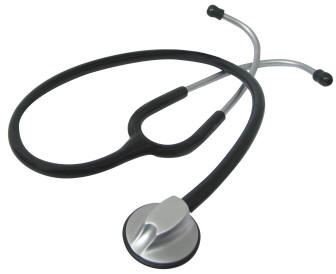Many times I am asked questions by administrators and hospital owners regarding the time it would take for their hospital to achieve NABH accreditation. With time I realised that this question presents an opportunity for me to educate them on the culture of Quality. Through this post, I would try to reach out to quality professionals, administrators, hospital managements and other healthcare professionals to involve them into a discussion on Quality culture and its relevance to Indian healthcare industry.
If you look at other quality systems like Six Sigma, Lean, ISO etc., these are mostly a philosophy and then crystallized into a methodology to achieve the desirable goals of the philosophy. The way I see Quality is that it is an approach to achievement improvements and always being concerned with the empty space in the proverbial 'half-filled glass'. A quality-mindset pushes you to devise better ways of doing your regular activities and again iterate to improve upon what we have already achieved.
To build a culture of quality, therefore, it is necessary to inculcate a mindset among all the stakeholders to think creatively and participate in continual improvements in the systems and processes of the organization. when we build such a culture, we are breaking the inertia among the professionals in our organizations and involving them in a participative process of finding better ways of doing things.
Before we delve into NABH implementation, we should first understand that it is also a quality system. Hence, the same fundamentals of building a culture of quality are applicable to NABH implementation as well. Quality professional in any industry would tell you that quality is not a one-day's job; rather it is a life-long striving to achieve perfection in what we do and upgrading the yardsticks by which we measure our performance.
We need to commit to Quality at the highest levels of management, which should trickle down the ranks by the way of goals and measurable objectives to achieve desired performance level. In the absence of the management commitment, it becomes difficult for the system to work coherently. We need to understand that NABH as a quality system is a tool to gear our hospitals towards a culture of making continual improvements every day. The system of assessment and surveillance audits is meant to gauge the compliance of the organization to this culture. The focus on the 64 measurable indicators is meant to give the hospitals a direction in how to measure their performance on quality parameters and to motivate them to improve their performance on these indicators by increased scores over a period of time. The fact that the standards themselves undergo transformation and that we are following the 3rd edition of NABH standards speaks for itself. The standards are responding to the changes happening in the industry and the increase in expectations of the patients from our hospitals. Any hospital planning to go for NABH has to also create systems that will be able to match the pace with which the standards are themselves expanding. To achieve this, therefore, we require a culture of quality in our organizations.
We need to question our existing practices, the way we do things and find out ways to improve them. NABH standards are your guide to ask these questions in a systematic way.
We need to commit to Quality at the highest levels of management, which should trickle down the ranks by the way of goals and measurable objectives to achieve desired performance level. In the absence of the management commitment, it becomes difficult for the system to work coherently. We need to understand that NABH as a quality system is a tool to gear our hospitals towards a culture of making continual improvements every day. The system of assessment and surveillance audits is meant to gauge the compliance of the organization to this culture. The focus on the 64 measurable indicators is meant to give the hospitals a direction in how to measure their performance on quality parameters and to motivate them to improve their performance on these indicators by increased scores over a period of time. The fact that the standards themselves undergo transformation and that we are following the 3rd edition of NABH standards speaks for itself. The standards are responding to the changes happening in the industry and the increase in expectations of the patients from our hospitals. Any hospital planning to go for NABH has to also create systems that will be able to match the pace with which the standards are themselves expanding. To achieve this, therefore, we require a culture of quality in our organizations.
We need to question our existing practices, the way we do things and find out ways to improve them. NABH standards are your guide to ask these questions in a systematic way.











